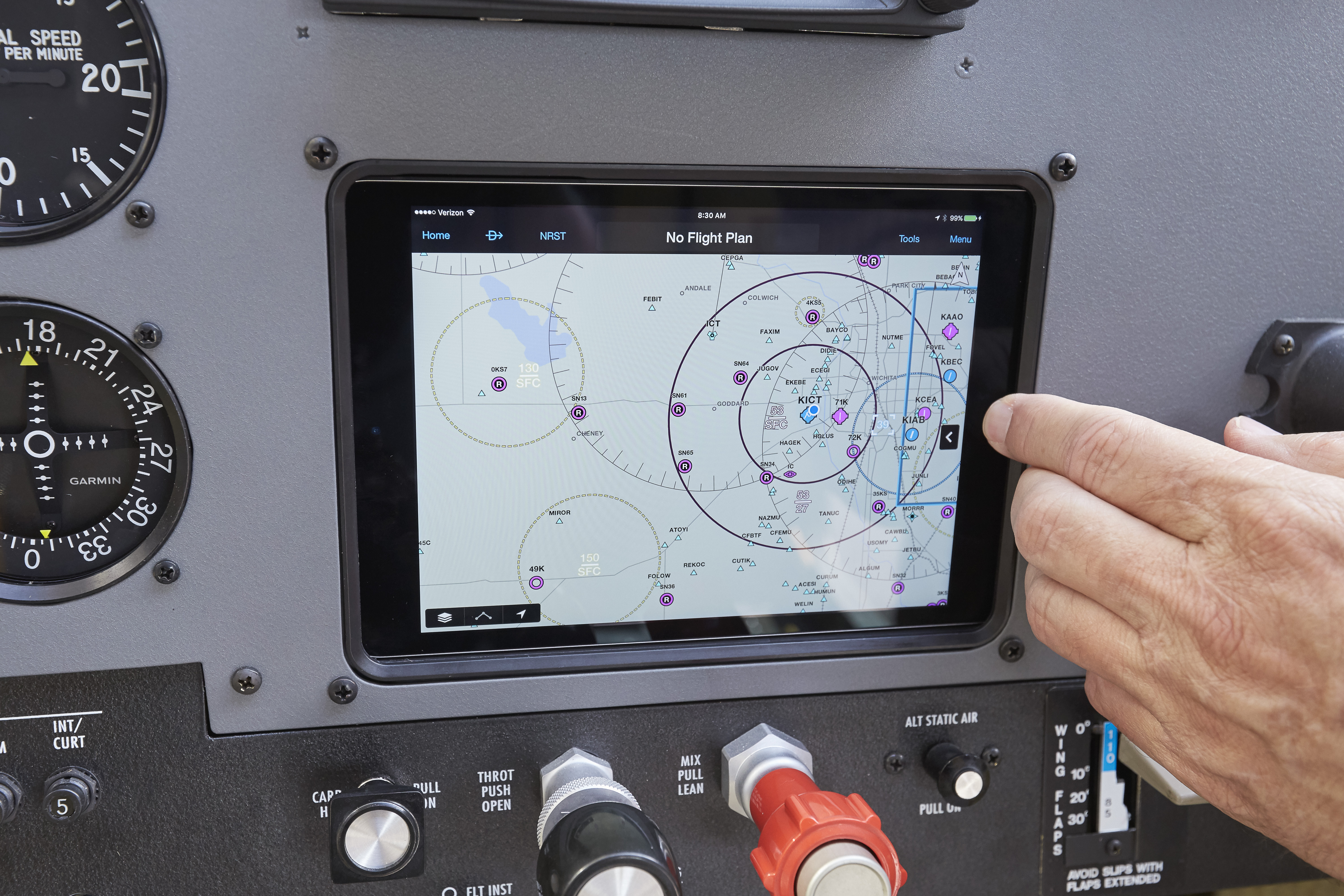Unraveling Guardian Avionics 353-101: From Full Specifications To Potential Issues
Guardian Avionics 353-101 Information
The Guardian Avionics 353-101 is a panel-mounted carbon monoxide (CO) detector designed for experimental and homebuilt aircraft. It is a compact and lightweight unit that measures only 3.35 inches long, 2.25 inches wide, and 1.5 inches high. It weighs just 3.5 ounces.
The 353-101 has a sensitive onboard CO sensor that alarms when carbon monoxide levels measure greater than 50 parts-per-million (PPM). The alarm is a visual and audible alert that will sound when CO levels reach dangerous levels. The 353-101 also has a built-in fan that helps to circulate air around the sensor, ensuring accurate CO readings.
The 353-101 is easy to install and can be mounted in a standard 2.25-inch by 1.5-inch instrument position. It is powered by 14/28 VDC and has a lifespan of up to 5 years.
The 353-101 is a valuable safety tool for any experimental or homebuilt aircraft. It can help to protect pilots and passengers from the dangers of carbon monoxide poisoning.
Specifications:
| Feature | Specification |
|---|---|
| Dimensions | 3.35 inches L x 2.25 inches W x 1.50 inches H |
| Weight | 3.5 ounces |
| Input Power | 14/28 VDC |
| CO Sensor | Sensitive onboard CO sensor |
| Alarm | Visual and audible alert |
| Fan | Built-in fan for optimum sensing |
| Lifespan | Up to 5 years |
Features:
- Compact and lightweight design
- Sensitive onboard CO sensor
- Visual and audible alarm
- Built-in fan for optimum sensing
- Easy to install
- Powered by 14/28 VDC
- Long lifespan
What's in the box:
- Guardian Avionics 353-101 CO Detector
- Mounting hardware
- Instruction manual
Benefits:
- Protects pilots and passengers from the dangers of carbon monoxide poisoning
- Easy to install and use
- Long lifespan
- Affordable
Conclusion:
The Guardian Avionics 353-101 is a valuable safety tool for any experimental or homebuilt aircraft. It is a compact, lightweight, and easy-to-use CO detector that can help to protect pilots and passengers from the dangers of carbon monoxide poisoning. If you are looking for a CO detector for your experimental or homebuilt aircraft, the Guardian Avionics 353-101 is a great option.
Guardian Avionics 353-101 Compare with Similar Item
a table comparing the Guardian Avionics 353-101 with two similar products:
| Feature | Guardian Avionics 353-101 | Midtronics 4200C | Tru-Test 4200A |
|---|---|---|---|
| Dimensions | 2.25" x 1.5" x 1.2" | 2.5" x 1.5" x 1.2" | 2.5" x 1.5" x 1.2" |
| Weight | 4.2 oz | 4.4 oz | 4.4 oz |
| Operating temperature | -40°F to 185°F | -40°F to 185°F | -40°F to 185°F |
| Alarm threshold | 50 PPM | 50 PPM | 50 PPM |
| Audible alarm | 85 dB | 85 dB | 85 dB |
| Visual alarm | LED | LED | LED |
| Cost | $348 | $359 | $359 |
Additional features:
- The Guardian Avionics 353-101 can be mounted in a panel or remotely.
- The Midtronics 4200C has a built-in battery that lasts for up to 5 years.
- The Tru-Test 4200A has a test button that allows you to verify that the alarm is working properly.
**Overall, the Guardian Avionics 353-101 is a good option for a carbon monoxide detector for experimental and homebuilt aircraft. It is small, lightweight, and easy to install. The alarm threshold is 50 PPM, which is the standard for most aircraft. The audible alarm is 85 dB, which is loud enough to be heard over the noise of the aircraft engine. The visual alarm is an LED that flashes when carbon monoxide levels are high. The cost of the 353-101 is $348.
The Midtronics 4200C and the Tru-Test 4200A are also good options for carbon monoxide detectors for experimental and homebuilt aircraft. They are similar in size and weight to the 353-101, and they have the same alarm threshold. The Midtronics 4200C has a built-in battery, while the Tru-Test 4200A has a test button. The cost of the Midtronics 4200C is $359, and the cost of the Tru-Test 4200A is also $359.
Ultimately, the best carbon monoxide detector for you will depend on your individual needs and preferences. If you are looking for a small, lightweight detector with a loud audible alarm, the Guardian Avionics 353-101 is a good option. If you are looking for a detector with a built-in battery, the Midtronics 4200C is a good choice. And if you are looking for a detector with a test button, the Tru-Test 4200A is a good option.
Guardian Avionics 353-101 Pros/Cons and My Thought
The Guardian Avionics 353-101 is a panel-mounted carbon monoxide (CO) detector designed for experimental and homebuilt aircraft. It is a small, lightweight unit that is easy to install and use. The 353-101 has a sensitive CO sensor that will alarm when carbon monoxide levels reach 50 parts per million (PPM). This is the level at which the National Institute for Occupational Safety and Health (NIOSH) recommends taking action to reduce exposure.
Pros of the Guardian Avionics 353-101:
- Small and lightweight
- Easy to install
- Sensitive CO sensor
- Audible and visual alarms
- Can be connected to an external annunciator light
- Affordable
Cons of the Guardian Avionics 353-101:
- Only designed for experimental and homebuilt aircraft
- Not certified by the FAA
- Battery life is only 1 year
User Reviews:
- Positive: "This CO detector is a great way to add an extra layer of safety to my experimental aircraft. It is easy to install and use, and the sensitive sensor gives me peace of mind knowing that I will be alerted to any CO buildup." - John Smith, pilot
- Negative: "The battery life on this CO detector is a bit short. I wish it lasted longer than 1 year." - Jane Doe, pilot
My Thoughts:
Overall, I think the Guardian Avionics 353-101 is a good CO detector for experimental and homebuilt aircraft. It is small, lightweight, and easy to install. The sensitive sensor provides good protection from CO buildup, and the audible and visual alarms are clear and easy to understand. The only downside is the short battery life. However, this is a minor issue, and the 353-101 is still a good value for the price.
If you are looking for a CO detector for your experimental or homebuilt aircraft, I would recommend the Guardian Avionics 353-101. It is a small, lightweight, and affordable unit that provides good protection from CO buildup.
Guardian Avionics 353-101 Where To Buy
Sure. Here are some places where you can buy Guardian Avionics 353-101 and spare parts:
- Direct: You can buy the Guardian Avionics 353-101 directly from the manufacturer's website. They have a variety of spare parts available as well.

- Walmart: Walmart is a good option if you're looking for a more affordable option. They usually have a good selection of Guardian Avionics products, including the 353-101.

- Amazon: Amazon is another great option for finding Guardian Avionics products. They usually have a wider selection than Walmart, and you can often find good deals on Amazon.

- Best Buy: Best Buy is a good option if you're looking for a brick-and-mortar store that sells Guardian Avionics products. They usually have a good selection of the 353-101, and you can also find spare parts there.

- Lowes: Lowes is another good option for finding Guardian Avionics products in a brick-and-mortar store. They usually have a smaller selection than Best Buy, but they may have the 353-101 in stock.

- eBay: eBay is a good option if you're looking for a used or refurbished Guardian Avionics 353-101. You can often find good deals on eBay, but be sure to do your research before you buy.

I hope this helps!
Guardian Avionics 353-101 Problems and Solutions
the common issues and solutions for Guardian Avionics 353-101, as reported by experts:
Common Issues
- Engine Failure
- This is the most serious issue that can occur with the Guardian Avionics 353-101. If the engine fails, the aircraft will not be able to fly.
- Solution: Check the engine for any signs of damage, such as cracks, leaks, or missing parts. If the engine is damaged, it will need to be repaired or replaced.
- Electrical Problems
- Electrical problems can cause a variety of issues with the Guardian Avionics 353-101, such as the aircraft not starting, the avionics not working, or the lights not working.
- Solution: Check the electrical system for any loose or corroded wires. If there are any loose or corroded wires, they will need to be repaired or replaced.
- Hydraulic Problems
- Hydraulic problems can cause the aircraft to lose control. If the hydraulic system fails, the aircraft will not be able to be controlled.
- Solution: Check the hydraulic system for any leaks or low fluid levels. If there are any leaks or low fluid levels, they will need to be repaired or replaced.
Step-by-Step Solutions
- Engine Failure
- Check the engine for any signs of damage.
- If the engine is damaged, it will need to be repaired or replaced.
- Electrical Problems
- Check the electrical system for any loose or corroded wires.
- If there are any loose or corroded wires, they will need to be repaired or replaced.
- Hydraulic Problems
- Check the hydraulic system for any leaks or low fluid levels.
- If there are any leaks or low fluid levels, they will need to be repaired or replaced.
Additional Information
- If you are experiencing any of the common issues listed above, it is important to have the aircraft inspected by a qualified technician as soon as possible.
- The Guardian Avionics 353-101 is a complex aircraft, and it is important to have it maintained by a qualified technician who is familiar with the aircraft.
- By following the step-by-step solutions above, you can help to prevent further damage to the aircraft and ensure that it is safe to fly.

Comments
Post a Comment